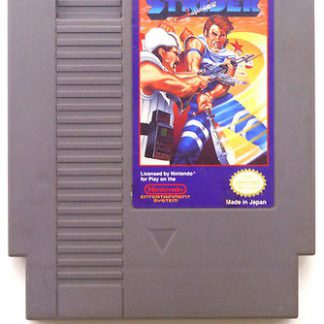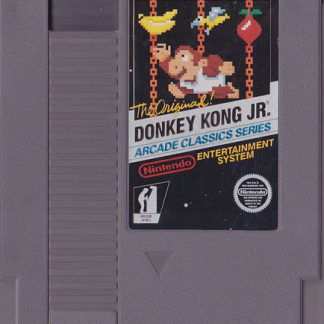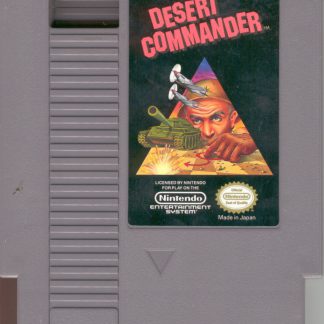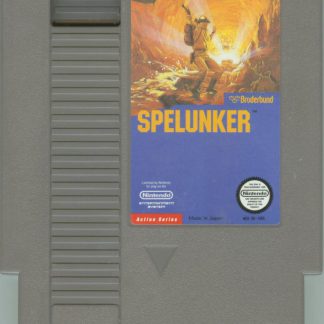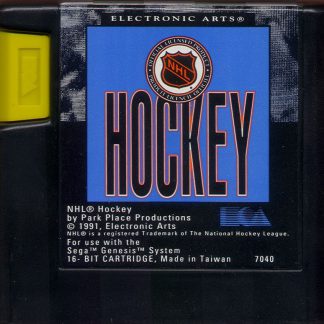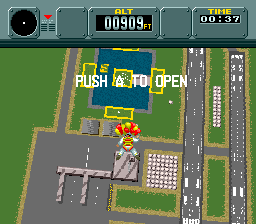
It’s not very often that a launch title for a new console can withstand the test of time. More often than not most launch games are shallow experiences that aim to coast by on sheer wow factor in terms of graphics. The SNES was fortunate in this regard since it had two groundbreaking titles as part of its lineup: the first was F-Zero, the other was Pilotwings.
Pilotwings was released at the SNES’s launch in North America in 1991. You are a rookie pilot out to earn his pilot’s license in for 4 vehicles. With the help of your instructor’s hopefully you’ll become proficient at hang gliding, the rocket belt, sky diving, and the light plane. Up until that point flight simulators were strictly the realm of PCs however Nintendo used the SNES’s Mode 7 to replicate the feel of flight, creating an easily palatable simulator accessible to anyone.
4 Events await, each presenting their own unique challenges. The Rocket Belt will task you with learning to adjust your height and speed to navigate through rings, hoops and other assorted obstacles before making a landing. The Light Plane has you following a path of orbs to eventually make a runway landing, with the complexity ramping up as you progress. Skydiving deploys you from ever increasing altitudes to learn how to control your descent and rotate on an axis. Hang Gliding proves the most involved as you catch thermal drifts to ascend to a designated height and then land in the targeted area. It’s a small list but the devil is in the details.
Each event takes place in its own training area and are graded based on specific criteria. These can be anything from time to completion, completion of the objectives, landing accuracy, etc. Points are awarded after succeeding or failing, followed by comments from the instructors. To pass you have to amass a point total for all events from each instructor. Bonus stages are available to add to your score and possibly bail you out if you’ve really screwed up but you’ll have to work for it, naturally. The last mission after completing your certification is a rescue mission in an attack helicopter to save your instructors. This is the only concession for twitch gamers and is a welcome change of pace from the rigid structure of the main game.
Are you good enough to make it this far?
It’s hard to quantify what makes Pilotwings so great. Is it the sensation of flight? For its time no other game on the market could compare to the freedom granted in the game and even going off the rails just to enjoy the sights is enjoyable. The mission structure is deceptively simple on the surface but the way you are graded encourages multiple attempts to increase your score, even if it’s only by a few points. True there are only 4 events but each features its own play mechanics and has a near perfect difficulty curve as you progress. For those that want even greater challenges earning your Pilot Wings will unlock even harder versions of the main events, now with new elements such as varying weather conditions and steeper point requirements.
Gratuitous use of Mode 7 in the early days of the SNES life was rampant however Pilotwings was a prime example of how to do it right. The backdrops are simply incredible, with silky smooth scaling rotations effects that were unrivaled on consoles. In many ways it was the precursor to the 3d phenomenon of if you can see it you can go there. The sound effects and music heighten the experience, with convincing engine noises and upbeat music to inspire you. In all facets Pilotwings was the complete package.
The only bad thing I can say about Pilotwings is that it’s a shame it didn’t encourage other developers to give the genre a try. The long years in between releases in the series are painful but when each is of this level of quality it’s worth the wait. I urge anyone and everyone to give this a try, there truly is something for everyone.

[nggallery id=145]
Join the Retro Game Age facebook group today

![Pilotwings (U) [!]063](http://www.retrogameage.com/retrogameage/wp-content/uploads/2011/11/Pilotwings-U-063-150x150.png)
![Pilotwings (U) [!]051](http://www.retrogameage.com/retrogameage/wp-content/uploads/2011/11/Pilotwings-U-051-150x150.png)
![Pilotwings (U) [!]013](http://www.retrogameage.com/retrogameage/wp-content/uploads/2011/11/Pilotwings-U-013-150x150.png)
![Pilotwings (U) [!]074](http://www.retrogameage.com/retrogameage/wp-content/uploads/2011/11/Pilotwings-U-074-150x150.png)
![Pilotwings (U) [!]117](http://www.retrogameage.com/retrogameage/wp-content/uploads/2011/11/Pilotwings-U-117-150x150.png)
![Pilotwings (U) [!]125](http://www.retrogameage.com/retrogameage/wp-content/uploads/2011/11/Pilotwings-U-125-150x150.png)
![Pilotwings (U) [!]133](http://www.retrogameage.com/retrogameage/wp-content/uploads/2011/11/Pilotwings-U-133-150x150.png)
![Pilotwings (U) [!]142](http://www.retrogameage.com/retrogameage/wp-content/uploads/2011/11/Pilotwings-U-142-150x150.png)
![Pilotwings (U) [!]061](http://www.retrogameage.com/retrogameage/wp-content/uploads/2011/11/Pilotwings-U-061-150x150.png)
![Pilotwings (U) [!]086](http://www.retrogameage.com/retrogameage/wp-content/uploads/2011/11/Pilotwings-U-086-150x150.png)
![Pilotwings (U) [!]103](http://www.retrogameage.com/retrogameage/wp-content/uploads/2011/11/Pilotwings-U-103-150x150.png)
![Pilotwings (U) [!]095](http://www.retrogameage.com/retrogameage/wp-content/uploads/2011/11/Pilotwings-U-095-150x150.png)
